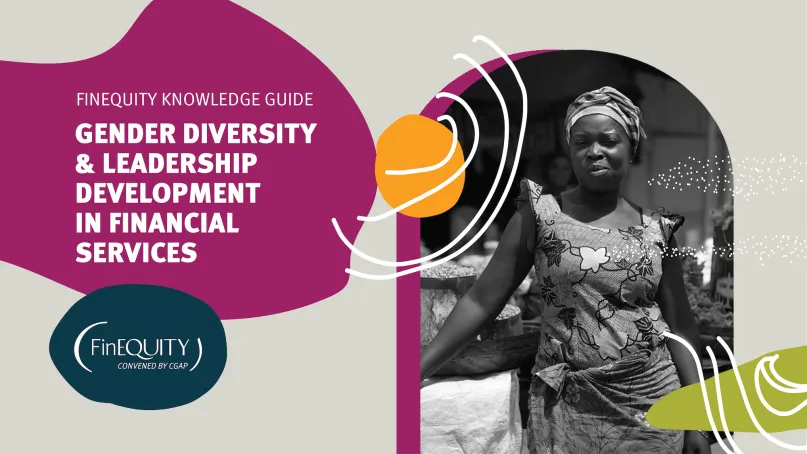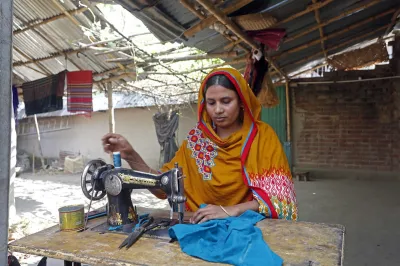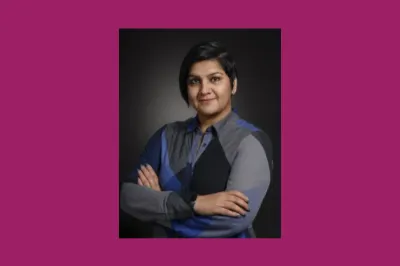FinEquity Knowledge Guide: Gender Diversity and Leadership Development in Financial Services

Women are underrepresented at all levels of the global financial system, from depositors and borrowers to branch managers and board members of financial service providers and regulators. Promoting gender balance and diverse leadership at all levels of financial services is key to creating gender-equitable financial systems. There is growing evidence that more women use financial services more often when they are served by women frontline employees or by women digital financial service (DFS) agents.
Research finds a positive relationship between a higher percentage of women in leadership and improved financial performance as a result of better innovation. More women are also needed at the management, executive and Board levels of banks and other FSPs, as well as mobile money providers who are part of mobile network operators, in order to expand outreach to women. As clients, women need products and services that address their financial needs, preferences, and aspirations. The creation of such products is more likely when there are diverse voices, including women, at the table where decisions about product design are made. There is also evidence that increasing women’s representation on boards of banking supervision agencies correlates to greater stability in the banking system and enhanced economic growth.
What is the purpose of this guide?
Drawing on a sample of recent publications, this guide brings together a selection of the most relevant practical resources, tools and proven solutions to increasing gender diversity in the financial services industry leadership and workforce organized into the following categories: Leadership, Workforce Development, Diversity and Representation, Institutional Gender Gap Assessment and Training.
Who is this guide for and how can it be used?
This guide is for financial services providers (FSPs), regulators and policymakers, donors, and development partners who may want to promote gender diversity and leadership development:
- Financial services providers – evidence of why gender diversity and inclusion is important for financial institutions, tools to assess the current status and guidance on how to advance gender diversity and inclusion goals, highlighting practical examples and case studies.
- Regulators and policymakers - evidence of why gender diversity in leadership development is important for regulators and policymakers and how they can develop their own capacity to deliver on women’s financial inclusion objectives.
- Donors and development partners – to understand why gender diversity and leadership development is important across the financial sector and how they can support stakeholders to adopt good practices.
This resource guide has been produced in collaboration with USAID. It will be updated with new resources periodically. For even more resources on this topic, visit FinEquity's Resource Library.
Recommended Resources
The Why: Gender diverse leadership as a catalyst for change and transformation
Women in Finance: A Case for Closing Gaps
This discussion note studied the large gaps between the representation of men and women in leadership positions in banks and in banking supervision agencies worldwide. The analysis suggests that the presence of women as employees as well as a higher share of women on bank boards appears associated with greater financial resilience of the institution. This study also finds that a higher share of women on boards of banking-supervision agencies is associated with greater bank stability. The evidence in this study is helpful for decision-makers and other stakeholders working in the financial services sector to strengthen the case for closing the gender gaps in leadership positions across the financial ecosystem.
What it Takes: Insights From Women Leaders in Financial Inclusion
This case study shares insights from the participants of Women’s World Banking’s Leadership and Development programs. It highlights the stories of women leaders who have navigated obstacles and achieved success to arrive where they are today in their professional journeys. The study aims to inspire and motivate other aspiring women leaders to work on advancing women’s financial inclusion.
Leadership as a Driver of Innovative Financial Services for Women
This research report draws on Women’s World Banking’s support to leaders of FSPs through its Leadership & Diversity for Innovation Program (LDIP) to provide insights on the value of strategic business leadership to advance women’s financial inclusion. Using a mix of qualitative and quantitative research, the report is aimed at FSPs and addresses the question of what factors lead to the success or failure of initiatives within FSPs to better serve low-income women.
Unlocking the Potential of the Women’s Market: The Gender Diversity & Inclusion Imperative
This brief explores the key benefits and challenges of implementing comprehensive gender diversity and inclusion (D&I) strategies, particularly as they relate to FSPs’ approaches to capturing the Women’s Market. It explores the experiences of Financial Alliance for Women (Alliance) members in their journeys to become both an employer and a bank of choice for women and provides key recommendations for FSPs seeking to embark on similar journeys.
Women’s Leadership Program
This podcast focuses on the Toronto Centre’s first leadership program for Women Financial Supervisors and Regulators in Sub-Saharan Africa. The speakers discuss the importance of providing women with the tools and strategies needed to develop and strengthen their key behavioral competencies and leadership skills.
Increasing Women’s Leadership in Financial Technology
This blog post, based on a panel discussion during the 2021 Financial Inclusion Global Initiative (FIGI) Symposium, highlights the current gender gap in fintech leadership, factors driving this gap and reasons for why it is important to address the gap as a part of advancing women’s financial inclusion. It includes examples of current efforts by different stakeholders to close this gap in the financial services sector as well as links to other resources on this topic.
Institutional Gender Gap Assessment: tools for financial inclusion stakeholders to assess their internal gender capacity and develop a strategy for increasing gender diversity and leadership
Women’s World Banking Gender Assessment Methodology
This business-driven tool is designed to help FSPs build strong, gender-diverse teams and position themselves to serve the women’s market. Using a brief confidential questionnaire (including a general survey and a separate survey for FinTechs), the methodology allows all types of FSPs to assess their strategic approach to gender equality, identify gaps and opportunities for improvement, learn about best practices on gender equality globally, set concrete goals and targets, and measure progress over time. FSPs who take the survey receive a personalized report with concrete suggestions and areas for improvement.
Gender Self-Assessment Toolkit for Financial Service Providers
This toolkit developed by UNCDF includes an institutional gender self-assessment tool (GSAT) and a standardized process with facilitator guides to support FSPs in reviewing and evaluating their existing gender approach. This includes identifying the linkages that exist among a) their business goals and profit; b) effectively serving the women’s market and; c) promoting women’s workforce participation and leadership. The toolkit aims to enhance FSPs’ institutional policies, practices and performance towards increasing targeted outreach to women clients through gender-sensitive products and services; and promoting workforce gender diversity in management and leadership.
Ilu Toolbox: Forging Diverse, Inclusive and Equal Businesses
This toolbox aims to address the gender gaps that exist within companies. It includes a self-assessment to evaluate the current approach to gender and inclusion within an organization and provided guidance on how to support women in leadership, promote equality in the workplace, examine impact of products and services on the lives of women and girls and equality in the value chain and advocacy practices. This toolbox is suitable for all businesses interested in taking advantage of the potential of gender equality to improve their competitiveness, their market value and their work environment, as well as becoming key actors to achieve an equal and inclusive society
Workforce Development: attracting and retaining diverse talent, building institutional inclusion through gender sensitive policies and processes across the ecosystem
Banking on Women: Gender Intelligence for Banks - Moving the Needle on Gender Equality
This case study illustrates how a gender-intelligent approach helped Habib Bank Limited (HBL), one of the largest commercial banks in Pakistan, to expand its outreach to women as clients. With support from the IFC, HBL rolled out several initiatives, including encouraging internal diversity, developing a sales focus on women, launching the HBL Nisa brand platform, and undertaking the Gender Intelligence Training Program, which was mandatory for management and all other employees.
Addressing Gender Based Violence and Harassment: emerging good practice from the private sector
This guidance note produced by the IFC, EBRD and CDC group presents emerging good practices to guide companies and investors in addressing gender-based violence and harassment (GBVH) risks in their investments, projects and operations. It may also be of interest to those in government, state-owned enterprises, trade unions, non-governmental organizations (NGOs) and those investing in public-private partnerships. The practices outlined draw from recent experience in the private sector, as well as a larger body of work from the non-profit sector. The guidance provides an opportunity to engage with stakeholders to refine practices as those in the private sector collectively gain implementation experience.
From Ideal Worker to Ideal Workplace: Using Behavioral Design to Create More Equitable Companies
This report details strategies rooted in behavioral insights that employers such as FSPs can implement and test in their workplaces to create more equitable work environments for all. The strategies proposed here are based on research about how the perpetuation of ideal worker norms is at the root of the gender pay gap—and that behavioral design can help uproot them for good by giving employers a useful set of tools to redesign work and workplaces. Laws and policies exist to address discriminatory pay practices—including by requiring equal pay for equal work, removing barriers to bringing legal claims, and promoting transparency and reporting on the pay gap.
Attracting and Retaining Talent through Inclusive Family-Friendly Policies
This guidance note forms part of a toolkit to help companies implement the Women’s Empowerment Principles (WEPs). It shows that investing in family-friendly policies, such as parental, maternity and paternity leave, makes business sense and benefits both employers and employees. It specifically aims to support WEPs signatories in prioritizing, establishing and implementing family-friendly policies to ensure that everyone is treated fairly at work.
Gender-Diverse Agent Networks Foster Channel Activity and Financial Inclusion for Women
This field note presents findings from research in the Democratic Republic of Congo with FINCA DRC. To answer the question of whether the presence of female agents increases DFS usage for female customers (and if the absence of female agents poses a barrier for female customers to use these services), the research analyzed more than 1 million financial transactions completed by the MFI’s 100,000 clients in 2017 and 2018 to show that gender matters for financial service usage. These results have clear business implications for scaling financial access to women; and for providers, these results underscore the importance of gender-diversified agency banking networks to reach all customers and deliver services effectively.
Moving Towards Gender Balance in Private Equity and Venture Capital
This report explores the link between financial returns and gender diversity; the lack of women in the industry; and steps needed to achieve gender balance. Women are underrepresented in leadership roles in both private equity and venture capital firms and portfolio companies. At the time of the research, only 15% of firms’ and 20% of portfolio companies’ leadership teams were gender-balanced; however, gender balance was found to be correlated with greater performance. Through over 50 interviews and 500 survey responses, the report outlines over 25 steps investors can take to move toward gender balance in both investment teams and portfolio companies. These initiatives are supported by 12 case studies of leading private equity and venture capital organizations that showcase best practices.
Training: capacity building programs for different financial services stakeholders to lead on gender in their institutions
Women’s World Banking Leadership Programs
Women’s World Banking offers a range of leadership programs to help institutions create inclusive workplaces to attract and retain diverse talent and develop innovative financial products and services that meet the needs of low-income women. This includes programs for regulators, women leaders and senior FSP management using a broad range of learning approaches – in-house training, executive coaching, peer exchanges – to guide participants to more effectively lead through complexity and change with the goal of advancing women’s financial inclusion. Program durations vary between 5 to 12 weeks.
Gender Equality Changemakers Programme
Digital Frontiers Institute offers a standalone course designed for female or male senior-level leaders in the private, public, development or NGO sector who have the motivation and influence to champion gender equality in their organization. Aimed at board members, directors, executives, partners, presidents, the course is a combination of self-directed video lessons and readings and facilitated group conversations and active reflection, allowing participants to gain new insights and approaches for supporting gender change initiatives in within their organizations.
Delivering Gender Equality: A Best Practices Framework For Male-dominated Industries
Through a customized best practices framework, demand-driven expert coaching, and a Gender Equity Executive Leadership Program, in partnership with Georgetown’s McDonough School of Business, Engendering Industries builds the capacity of leaders to identify critical gender equality gaps and implement interventions that directly increase opportunities for women within the company and strengthen the overall operations of the organization. The approach of the Engendering Industries program focuses specifically on improving gender equity throughout the employee life cycle. From attraction and talent outreach to separation and retirement, there are numerous opportunities to promote gender equality within organizations.



Excellent
Leave a comment